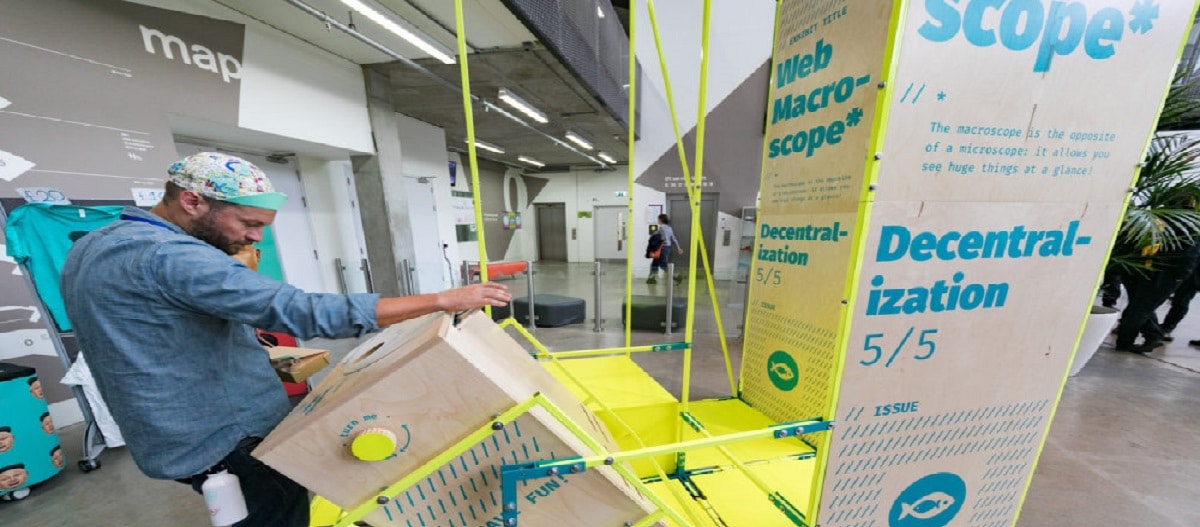
Recently the Wireless Innovation for a Networked Society (WINS), organized by Mozilla and sponsored by the National Science Foundation have given a call interested in being able to contribute to new solutions that help connect people to the internet in difficult circumstances, as well as for great ideas that decentralize the web.
Participants may be eligible for various cash prizes offered, with a total of $2 million in prizes from the organizations.
The idea behind it is because Mozilla believes that the Internet is a global public resource that should be open and accessible to everyone and that for several years it has still been a resource that is not available to everyone.
“We contribute to the health of the Internet by supporting the great ideas that make the web accessible, decentralized, and resilient,” says Mozilla.
Currently, 34 million people in the United States, or 10% of the country's population, do not have access to quality internet connectivity. This figure rises to 39% in rural communities and 41% on tribal lands. And when disasters strike, millions more people can lose vital connectivity when they need it most.
To connect unconnected and unconnected people in the United States, Mozilla is accepting applications today for the WINS (Wireless Innovation for a Networked Society) challenges. Sponsored by the NSF, a total of $2 million in prizes are available for wireless solutions that connect people after disasters or connect communities that lack reliable Internet access. When disasters like earthquakes or hurricanes strike, communication networks are among the first pieces of critical infrastructure to become overloaded or fail.
It is mentioned that Challenge candidates should plan for high user density, extended range and solid bandwidth. Projects should also aim for a minimal physical footprint and maintain user privacy and security.
Regarding the prizes, these are recognized with outstanding achievements during the design phase (Phase 1) of the Challenge and here are some.
- Lantern Project | First place ($60,000)
A flashlight is a keychain-sized device that hosts decentralized web apps with local maps, supply locations, and more. These apps are broadcast to lanterns via long-range radio and Wi-Fi, then saved offline in browsers for continued use. Flashlights can be distributed by emergency response services and can be accessed by citizens via a special flashlight-supported Wi-Fi network.
- HERMES | Second place ($40,000)
HERMES (High Frequency Emergency and Rural Multimedia Exchange System) is an autonomous network infrastructure. It allows local calls, SMS and basic OTT messaging, all through equipment that fits in two suitcases, using GSM, Software Defined Radio and high frequency radio technologies.
- Emergency LTE | Third place ($30,000)
Emergency LTE is an open source, solar and battery powered cellular base station that functions as a stand-alone LTE network. The unit, which weighs less than 50 pounds, has a local web server and apps that can broadcast emergency messages, maps, messages and more.
This project provides a network that works all the timeor, even if all other systems are offline. A goTenna Mesh device unlocks connectivity using ISM radio bands, then pairs with Android and iOS phones to provide messaging and mapping services, as well as backlink connectivity when available - GWN | Honorable Mention ($10,000)
GWN (Wireless Network-less Network) takes advantage of ISM radio bands, Wi-Fi modules, and antennas to provide connectivity. When users connect to these durable 10-pound nodes, they can locate nearby shelters or alert rescuers. - Wind uses Bluetooth, Wi-Fi Direct, and physical infrastructure nodes built from common routers to create a peer-to-peer network. The project also has a decentralized software and content distribution system.
- Portable Cells Initiative | Honorable Mention ($10,000)
This project deploys a 'microcell', or temporary cell tower, after a disaster. The project uses software defined radio (SDR) and a satellite modem to enable voice calls, SMS and data services. It also allows connection to neighboring microcells. Project leader: Arpad Kovesdy in Los Angeles. - Othernet Relief Ecosystem | Honorable Mention ($10,000)
Othernet Relief Ecosystem (ORE) is an extension of Dhruv's Othernet facility in Brooklyn, NY. These installations stem from a long tradition of mesh networking in which OpenWRT firmware and the BATMAN protocol run on Ubiquiti hardware to form large-scale local area networks. Each island of connectivity can be connected to the others using point-to-point antennas. A set of lightweight applications can live on these networks. Project leader: Dhruv Mehrotra in New York. - RAVE – Honorable Mention ($10,000)
RAVE (Radio-Aware Voice Engine) is a push-to-talk mobile app that enables high-fidelity audio communication over a Bluetooth or Wi-Fi connection from peer to peer. Multiple RAVE devices form a multi-hop network capable of extending communication over longer distances. RAVE's reach can be extended through a network of relay nodes. These low-cost, battery-powered devices automatically set up a mesh network that extends real-time Internet and voice access to an entire community and text-based communication miles away. Project without a throne in Washington. Grand Prize Winners of
Source: https://blog.mozilla.org